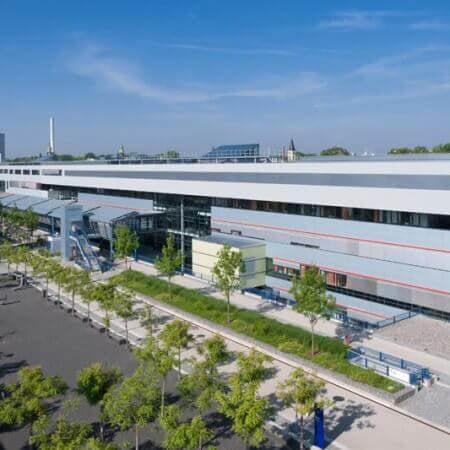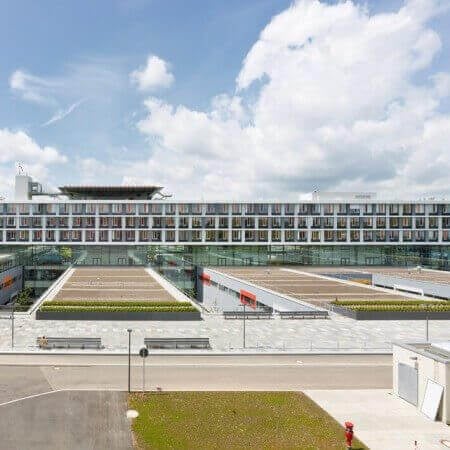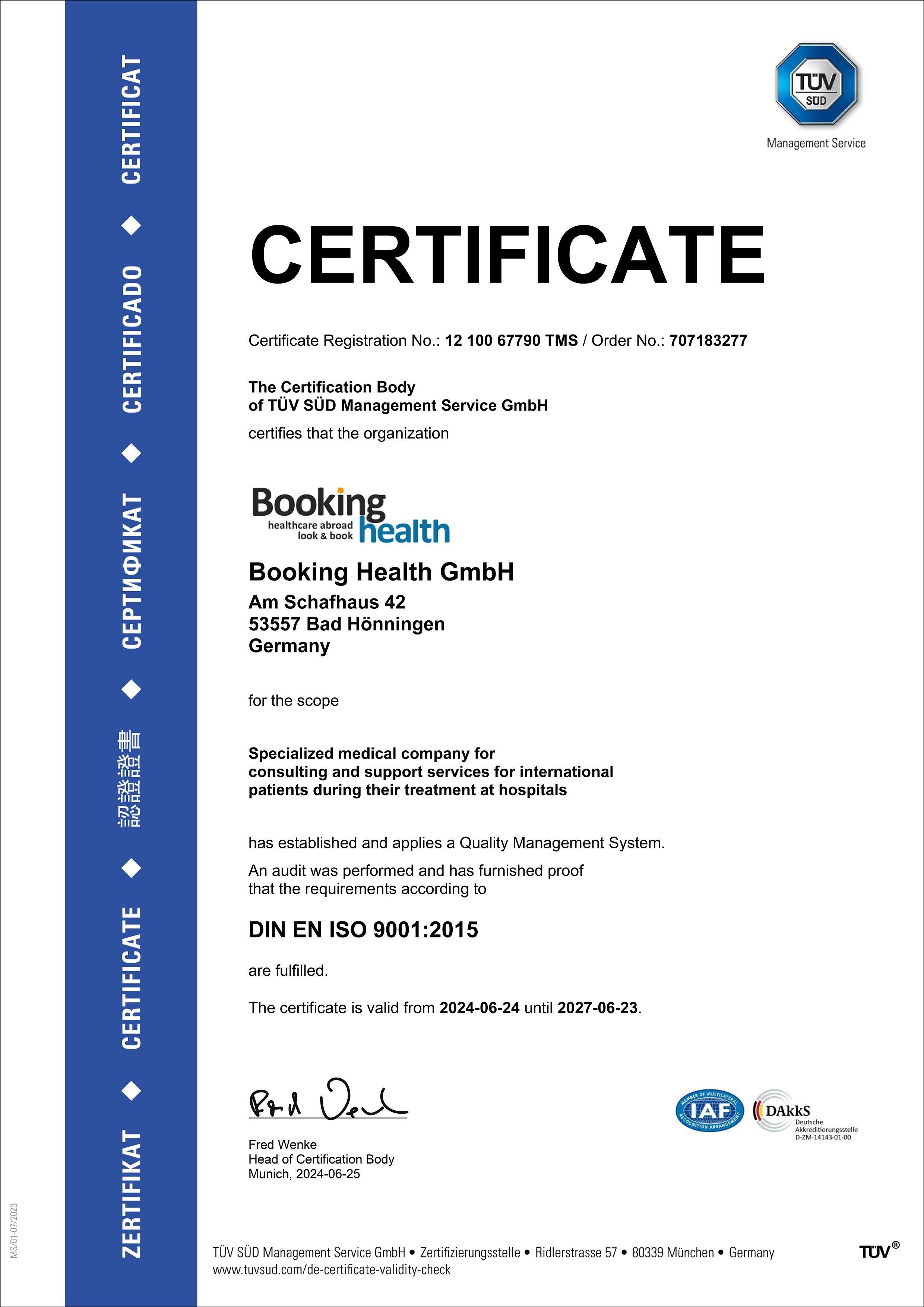Top Hospitals for Cervical Spinal Stenosis Treatment in Germany
Each hospital in this list meets Booking Health’s strict international standards: at least 250 surgeries per year, ISO‑certified quality management, and documented survival outcomes. Our medical board then ranks the clinics by clinical expertise, technology, and patient‑satisfaction scores.

According to the reputable Focus magazine, the University Hospital Frankfurt am Main ranks among the top German medical facilities! The hospital was founded in 1914 and today is a well-known German medical facility, which combines rich traditions and scientific innovations. A medical team of more than 6,500 employees cares about









Diagnostic tests for cervical spinal stenosis
Price from:
0.00
Go to the program Treatment of cervical spinal stenosis (1 segment) with decompressive laminectomy
Price from:
11432.46
Go to the program Treatment of cervical spinal stenosis (4 segments) with decompressive laminectomy
Price from:
16725.39
Go to the program Surgical treatment of cervical spinal stenosis in combination with instability with decompressive laminectomy and the stabilizing operation (4 segment)
Price from:
29902.52
Go to the program Treatment of cervical spinal stenosis (2-3 segments) with decompressive laminectomy and discotom
Price from:
15556.11
Go to the program Treatment of cervical spinal stenosis (4 segments) with decompressive laminectomy and discotomy
Price from:
16745.22
Go to the program Treatment of cervical spinal stenosis in combination with instability with decompressive laminectomy and the stabilizing operation (1 segment)
Price from:
22355.75
Go to the program Treatment of cervical spinal stenosis in combination with instability with decompressive laminectomy and the stabilizing operation (2-3 segments)
Price from:
29804.39
Go to the program Treatment of cervical spinal stenosis (1 segment) with decompressive laminectomy and discotomy
Price from:
11756.1
Go to the program 
According to the Focus magazine, University Hospital Erlangen ranks among the best medical facilities in Germany! The hospital is one of the leading healthcare facilities in Bavaria and offers top-class medical care distinguished by the close intertwining of clinical activities with research and training of medical students. The







Diagnostic tests for cervical spinal stenosis
Price from:
0.00
Go to the program Treatment of cervical spinal stenosis (1 segment) with decompressive laminectomy
Price from:
12147.6
Go to the program Treatment of cervical spinal stenosis (4 segments) with decompressive laminectomy
Price from:
18102.42
Go to the program Surgical treatment of cervical spinal stenosis in combination with instability with decompressive laminectomy and the stabilizing operation (4 segment)
Price from:
31675.24
Go to the program Treatment of cervical spinal stenosis (2-3 segments) with decompressive laminectomy and discotom
Price from:
16226.36
Go to the program Treatment of cervical spinal stenosis (4 segments) with decompressive laminectomy and discotomy
Price from:
18113.91
Go to the program Treatment of cervical spinal stenosis in combination with instability with decompressive laminectomy and the stabilizing operation (1 segment)
Price from:
24177.53
Go to the program Treatment of cervical spinal stenosis in combination with instability with decompressive laminectomy and the stabilizing operation (2-3 segments)
Price from:
31548.91
Go to the program Treatment of cervical spinal stenosis (1 segment) with decompressive laminectomy and discotomy
Price from:
12044.24
Go to the program 
The University Hospital Ulm is an advanced medical complex that provides patients with high-class medical care using the very latest scientific achievements. The medical facility has been performing successful clinical activities for more than 40 years and has long earned an excellent reputation throughout Europe. The hospital r









Diagnostic tests for cervical spinal stenosis
Price from:
0.00
Go to the program Treatment of cervical spinal stenosis (1 segment) with decompressive laminectomy
Price from:
12052.6
Go to the program Treatment of cervical spinal stenosis (4 segments) with decompressive laminectomy
Price from:
17632.62
Go to the program Surgical treatment of cervical spinal stenosis in combination with instability with decompressive laminectomy and the stabilizing operation (4 segment)
Price from:
31971.73
Go to the program Treatment of cervical spinal stenosis (2-3 segments) with decompressive laminectomy and discotom
Price from:
16594.89
Go to the program Treatment of cervical spinal stenosis (4 segments) with decompressive laminectomy and discotomy
Price from:
17631.58
Go to the program Treatment of cervical spinal stenosis in combination with instability with decompressive laminectomy and the stabilizing operation (1 segment)
Price from:
23615.86
Go to the program Treatment of cervical spinal stenosis in combination with instability with decompressive laminectomy and the stabilizing operation (2-3 segments)
Price from:
31918.49
Go to the program Treatment of cervical spinal stenosis (1 segment) with decompressive laminectomy and discotomy
Price from:
12276.01
Go to the program 

